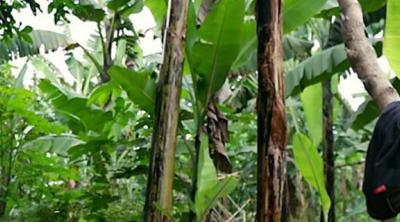CRS in Rwanda
Rwanda, the “land of a thousand hills,” is a verdant nation that is home to the largest rainforest in Africa and a third of the world’s gorillas. Landlocked in East Africa and roughly the size of Massachusetts, Rwanda Is the continent’s most densely populated country with 13.2 million people. It is also largely agrarian as about 75% of the population’s livelihood depends on farming.
Rwanda is a country situated in Central Africa, bordered to the north by Uganda, to the east by Tanzania, to the south by Burundi, and the west by the Democratic Republic of the Congo. The GDP per capita is $997.98 (IMF, 2024) and the country is ranked the 4th least corrupt country in Africa (Corruption Perception Index, TIR 2015) and the 2nd easiest place to do business in Africa (Doing Business Report, World Bank 2020).
Since 1960, CRS has been working to support families living in vulnerable conditions. Aligning to the CRS Global Strategy 2030, CRS Rwanda is working in five key main programming areas:
- Youth
- Health and Nutrition
- Early Childhood Development
- Agriculture
- Partnership and Capacity Strengthening
By leveraging past and current successes, CRS Rwanda will continue to expand in the key programming areas but strengthen other sectors like market systems development and youth digital skills. CRS Rwanda also continues to provide strategic institution capacity-strengthening support to the Catholic Church in Rwanda to reinforce professional operating practices, improve management systems and promote strategic planning.
Stats
People Served: 2,137,124
Population: 13,246,394
Size: 10,169 sq mi; about the size of Massachusetts
Our Partners
Become a Partner ›Programming Areas
CRS' History in Rwanda
1960: CRS has been present in Rwanda since 1960 working to strengthen vulnerable Rwandan families with programming in health and nutrition, agriculture, economic strengthening, livelihood development, youth empowerment, and peacebuilding.
1960-1997: From the 1960s until the late 1980s, CRS implemented large-scale nationwide school feeding programs. In the 1980s, CRS increased its focus on small enterprise development and agricultural production. During the early 1990s, CRS managed US government food commodities and other aid to respond to the needs of a population suffering increasingly from unrest and fighting.
1994: In June 1994, CRS began an immediate response to the short-term emergency needs of a ravaged country, torn by the genocide against the Tutsi, and continued this emergency support through 1997. CRS also initiated several agricultural rehabilitation programs to give returnees and internally displaced people the necessary seeds and tools to relaunch agricultural activities, the chief livelihood of rural Rwandans.
1997-2001: Between 1997 and 2001, CRS programs shifted from emergency aid to ‘transition’ programming. This included the construction of houses for the displaced and institutional feeding to safety net centers caring for orphaned children, street children, the elderly, and persons with disabilities. Agriculture activities focused on lowland development and watershed management to increase household crop productivity for the most vulnerable. Microfinance efforts also began in this period. With US government funding and in collaboration with four local Catholic dioceses, CRS undertook a large youth peacebuilding project for out-of-school youth, which at that time represented 80% of school-aged children. The project created solidarity camps in which children received vocational training, human rights education, trauma counseling, and skills for conflict management, among other activities.
2001-2005: From the turn of the millennium through 2005, the CRS program moved out of transition activities into more focused livelihood interventions and greater engagement with its Caritas partners as primary program implementers. CRS supported landless farmers, while also supporting for the first time HIV-affected households with food aid. Food aid was subsequently phased out and CRS introduced and scaled up the following programmatic interventions: bio-intensive agriculture techniques, nutritional education, and participation in Savings and Internal Lending Communities. The Great Lakes Cassava Initiative addressed the pathological threats to cassava, improved the quality of cassava production, and improved the overall security and well-being of vulnerable households. With the launching of the US President’s Emergency Plan for AIDS Relief (PEPFAR), CRS dramatically increased HIV/AIDS activities in 2004 by supporting Antiretroviral Therapy (ART) services to rural health centers, building community capacity to care for Orphans and Vulnerable Children (OVC), and promoting Abstinence and Be Faithful interventions in schools and communities. OVC activities increased in 2006 with CRS participation in the PEPFAR-funded Community HIV&AIDS Mobilization Program, where CRS supported Caritas Rwanda as the largest participating local organization, serving over 15,000 children. CRS’ OVC activities encompassed support to both in-school and out-of-school youth through direct school fees and materials, vocational training, and training of community leaders in childcare, counseling, and children’s rights. Community volunteers and older OVCs participated in Savings and Internal Lending Communities.
2005-2010: Starting in 1999, but intensifying during this period, CRS provided support to the Catholic Church to establish national and diocesan-level Justice & Peace Commissions, working with the Church to build capacity of local parishes to promote reconciliation, education on human rights, and encourage participation in the Gacaca courts. In 2008, CRS initiated follow-up support to increase direct interventions through small community-based Christian entities to promote community reconciliation.
2014-Now: CRS’ programming continues to span multiple sectors like nutrition, early childhood development, agriculture and livelihoods, market systems development, youth entrepreneurship and employability, and partnership and capacity strengthening.




